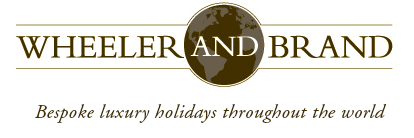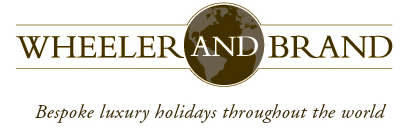A History of the British Virgin Islands
Despite the decline of the British Empire, the British Virgin Islands remain an overseas territory, part of the Crown, albeit now independently governed and run.
Having such a far-flung group of islands in the Caribbean may seem like an odd inclusion for Britain, but there's a long history with the British Virgin Islands.
The British Virgin Islands are just part of the Virgin Islands, a large archipelago. The other part of the group is officially US territory, and referred to the as the US Virgin Islands.
Here's a look at the history of the British Virgin Islands from their beginnings to the modern day.
A map of the British Virgin Islands
The beginnings
There's evidence that settlers first arrived in the British Virgin Islands in 100BCE, by Arawak Indians from South America and were later largely replaced by the more aggressive Carib Indians. Not much is still known about these early settlers and there's some dispute over exactly what occurred.
Nevertheless, the group of islands remained relatively anonymous until the arrival of Christopher Columbus in 1493. The famous explorer is said to have named the islands "Santa Ursula y las Once Mil Vírgenes" (Saint Ursula and her 11,000 Virgins) which was later just shortened to "The Virgins". This name is a reference to the saint who was killed in the 4th century along with her 11,000 virgin followers.
The islands were claimed by the Spanish but they never attempted to settle on them, using them for fishing and anchorage purposes only. There are some suggestions that the Spanish slaughtered much of the indigenous population.
Dutch occupation
The Dutch were the next European race to express an interest in the British Virgin Islands, with Privateer Joost van Dyk setting up a base on Tortola <INSERT LINK TO a Guide to Tortola, British Virgin Islands>.
The peaceful co-existence of the Spanish and the Dutch didn't last for long and Joost van Dyk escaped and sought refuge on another island, hiding from the Spanish who were battling to wrest control. The Netherlands on the other hand were trying to expand their base and were seeking to oust the Spanish; they were ultimately successful and took control of the British Virgin Islands.
Jost Van Dyke, an island named after the Privateer
These days were not favourable ones for the islands as when the Spanish arrived they brought diseases that hadn't been seen in this part of the world before, such as smallpox. This decimated the people of the Caribbean.
Along with disease, the Spanish also introduced the idea of slavery to what had been a well-structured community with strong agricultural and fishing industries, with sailing and boats part of the culture. Many of the Indians who had inhabited the islands simply died from being worked too hard, shipped off to mines in the Dominican Republic for profit.
Arrival of the British
The British arrived in the region in 1672, and have remained in the area ever since. The ownership of the islands became part of the Third Anglo-Dutch War with the Brits seizing control.
At the end of the war, all territories were ordered to be returned to their original owners but the Netherlands delayed reclaiming the Virgin Islands because they were in the midst of a war with France and feared another attack.
The British therefore annexed the islands in 1672.
The war between the Dutch and the French ended in 1678 and in 1684, the Dutch formally requested the return of their islands. By now, the British were reluctant to hand them over, having been in control for so long.
Years of political wrangling and negotiations ensued with disputes over whether the islands were actually conquered or merely entrusted to the British for safekeeping during troubled times.
In the end, orders were issued for the islands to be returned to those who held "…sufficient procuration or authority to receive the same." but because the Dutch occupiers had left the islands, it was interpreted that there was no-one entitled to receive them.
However dubious this stance may have been legally, the British retain their share of the Virgin Islands and have done ever since.
Changes on the islands
The British changed much during their time in control of the islands, first abolishing slavery with the Abolition of the Slave Trade Act (1807) which finally reached the Caribbean by the 1830s.
Elsewhere in the archipelago, the remaining islands were sold to the US in 1917 for $17 million. These islands have been transformed over the years into far more commercial destinations, renowned for being a hive of activity with lots going on while by comparison, the British Virgin Islands are quieter and more exclusive, with upmarket resorts and beaches.
In 1958 the Federation of West Indies was created but the British Virgin Islands declined the invitation to become a member, preferring to maintain its status quo, reporting directly to Her Majesty's Secretary of State. It had up until 1956 been a member of the Federation of the Leeward Islands but this was abolished at that time.
The flag of the British Virgin Islands
A limited amount of self-rule was first introduced to the islands in 1967 and this was later extended further in 1977.
Today, the British Virgin Islands are a self-governing entity but remain an Overseas UK Territory, with the official head of state the Queen.

